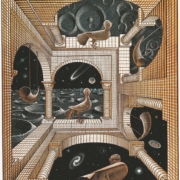The pact on acceptable risk a psychodynamica model for road safety education with a group of adolescents
Abstract
The author presents a specific training methodology for road safety education which he called “Pact for Acceptable Risk”. This method, in contrast with the traditional techniques of road safety education, involves a mutual commitment among the younger generation and the previous ones, and expects the acquisition of the meaning of the rule is linked to the acceptance limit, the result of an educational journey around the meaning of the codes and their regulatory function relationships. The acquisition of the Highway Code is the culmination of this path, which can only be achieved by involving the adolescent group. The peer group is proposed as a valuable social resource for the prevention and as a laboratory in which to prepare the individual to carry it from the destructiveness of unnecessary risk, which endangers the life or the evolution of the adolescent, to that of the acceptable risk , that is, to the evolutionary constructive aggression towards the environment. Only within a loving relationship and educational prolonged, achievable within the educational environment (school or youth centers) can help adolescents to distinguish the experiences of risk that favor the maturation process from their pathological variants that block. The author presents a vignette in which the group experience, psychodynamic conduct, allows the teenager at risk of putting a limit to his self-destructive behavior, mobilizing the group in self-protective function.




